Feijoada Friday is back!!! Today we have the DKW-Vemag Belcar, a car that made an enormous success here in the 50’s and 60’s. The name of the post? After the jump!
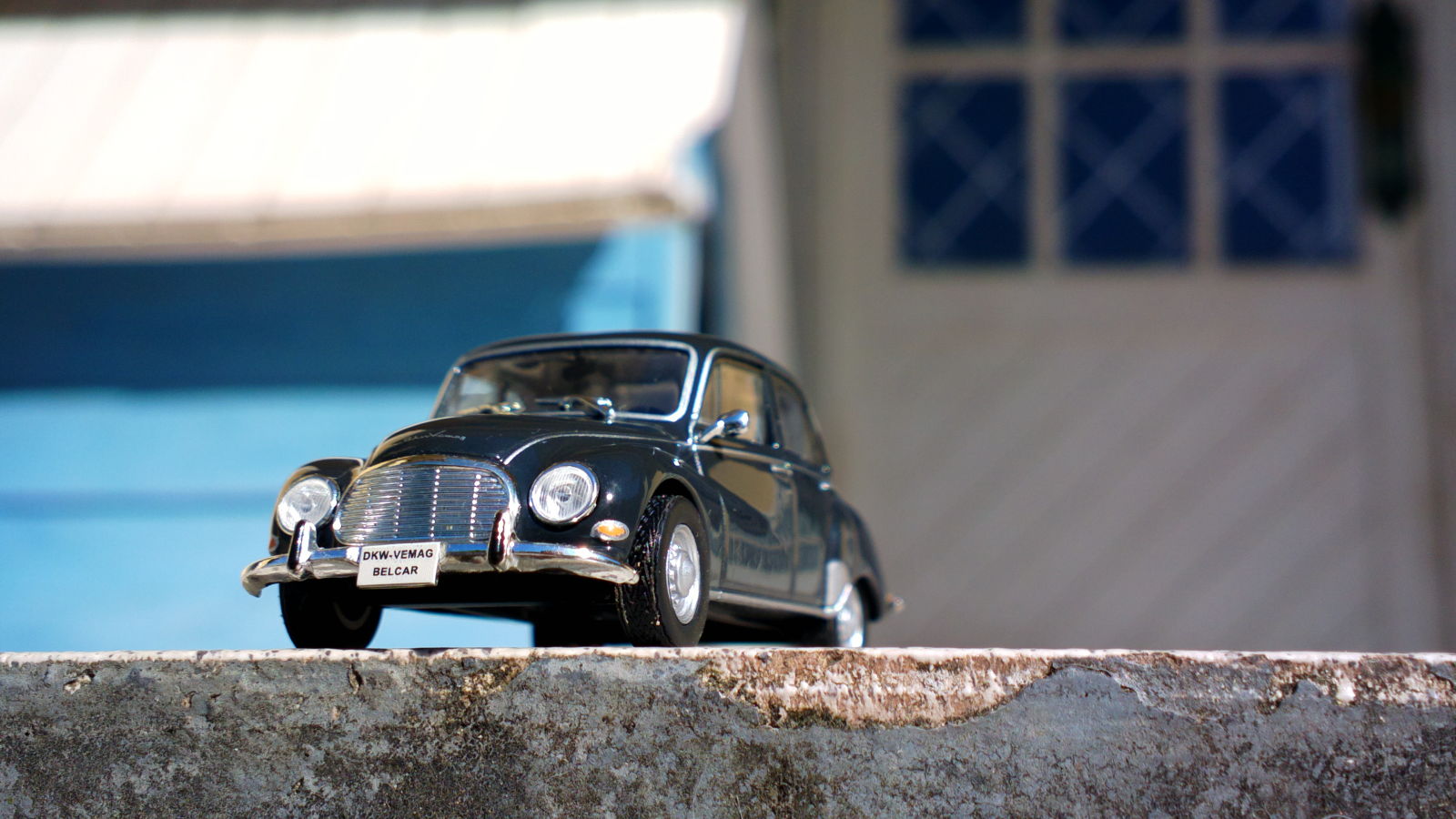
DKW is called “decavê” (if you know a bit of french, it’s pronounced like décavé) in Brazil, and “deixavê” is a portmanteau of “me deixa ver” or “let me see”. History says that boys would look attentively to DKWs when a woman was getting out of the car, the suicide doors could “let them see” the legs of the passenger.

The DKW-Vemag is a mark of Brazilian auto history. It was the very first car made in Brazil! Not only the first car to be made on Brazilian soil, it rests today as the only two-stroke car ever sold or produced here too.

In 1945 the Distribuidora de Automóveis Studebaker S.A. (Studebaker Automobiles Distributor Inc.) was founded, initially importing Studebakers to Brazil, and some years later, importing Scania trucks as well. In 1952 they fused with Elit Equipamentos para Lavoura e Máquinas Agrícolas (Elit Farm Equipment and Agricultural Machines) forming the VEMAG, or VEículos e Máquinas AGrícolas (Vehicles and Agricultural Machines). In 1956, after an incentives program by then president Juscelino Kubitschek for developing the Brazilian auto industry, VEMAG was the first company to built a factory to produce cars here.
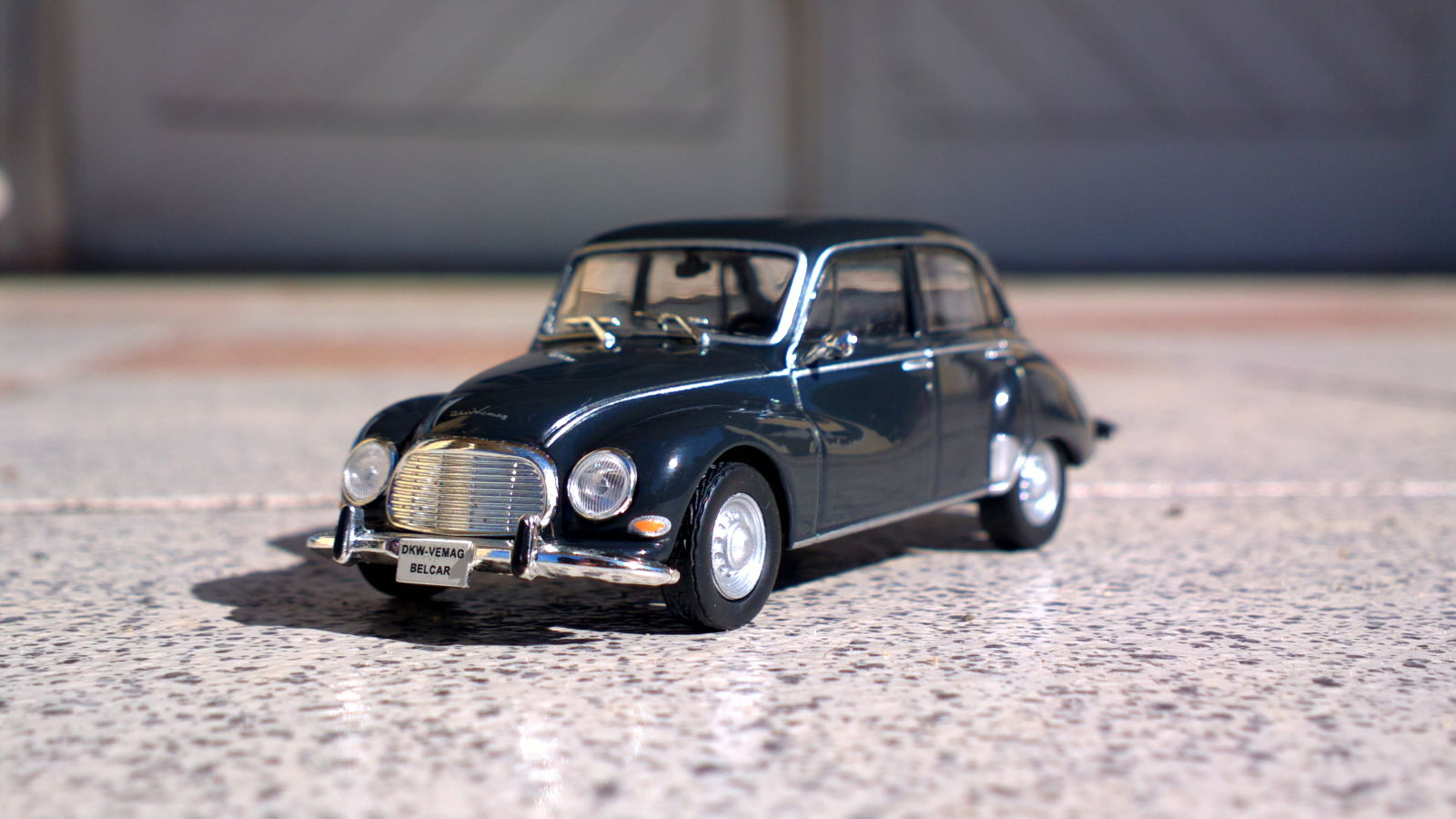
However, this model, the Belcar, wasn’t really the first model produced by DKW-VEMAG. The very first was a wagon version, nicknamed the Vemaguete (“guete” pronounced like spaghetti), followed shortly by a Jeep-style car, the DKW Candango (a future FF post) and the Grande DKW-Vemag, shortly renamed to Belcar, exactly like this model.
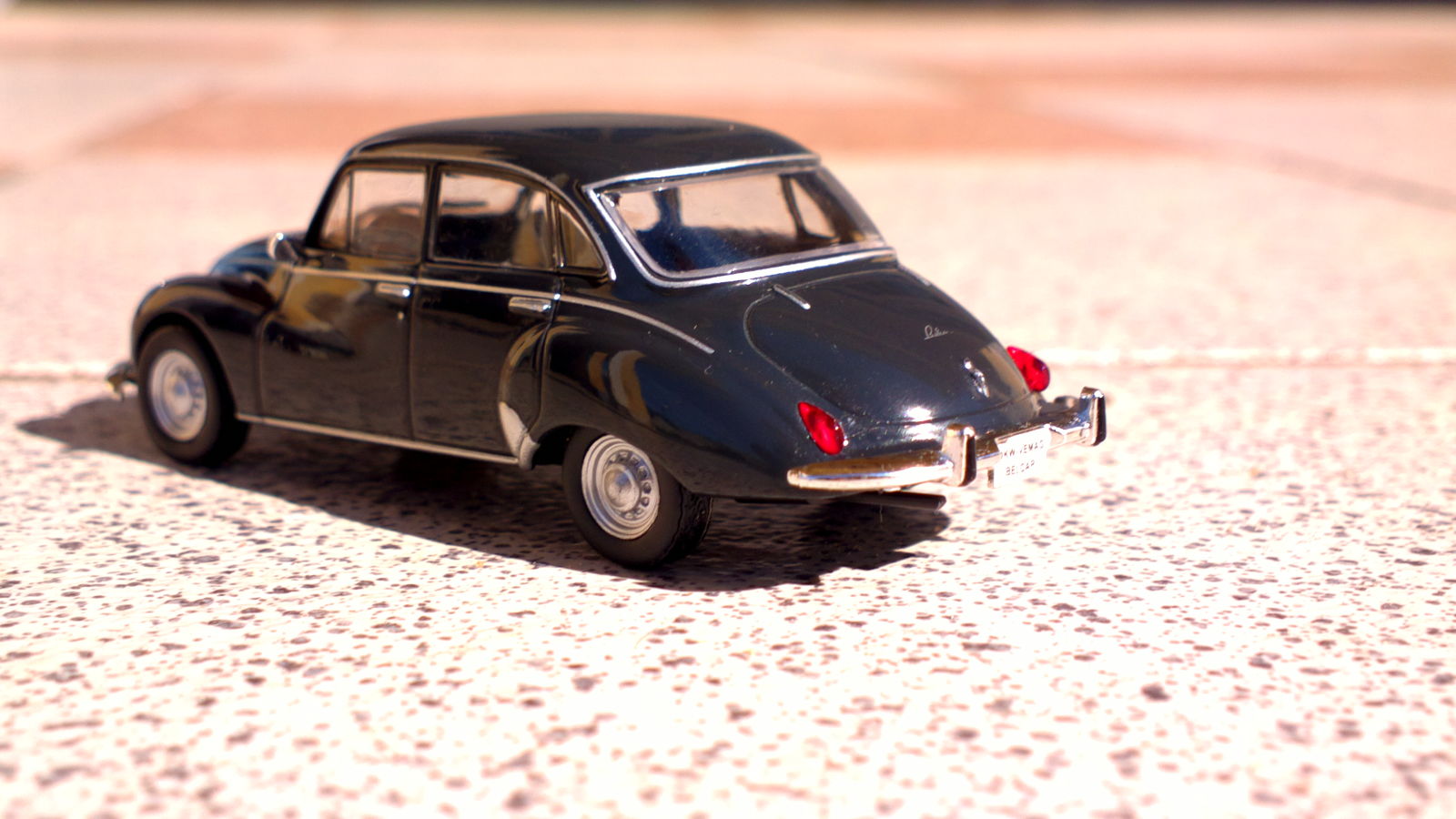
This car was just so simple! The three cylinder, two stroke engine had just seven movable parts. Since it was a two stroke, there were no valves, just windows on the cast iron block to the fuel to enter and the exhaust gases to leave. The owners needed to mix the two-stroke oil with the fuel, in the proportion of 1 part oil to 40 parts fuel, but this eliminated the need for oil changes, something the other cars asked for every 2,500 km. There wasn’t a water pump to cool the engine, it used a thermosyphon, where the fan to cool the radiator was connected to the crankshaft. The temperature meter wasn’t electrical, it was just a common thermometer filled with ether!!!

This car was also just so different from anything else. The gas pedal had two stages, with the second stage being harder to make the car more economical. The gear lever was on the steering column, a 4 speed gearbox with the odd gears below and the even gears up, the opposite of what’s usual. Having the gears on the column allowed it to have bench seats on the front, so this was a 6 passenger sedan, a huge selling point.
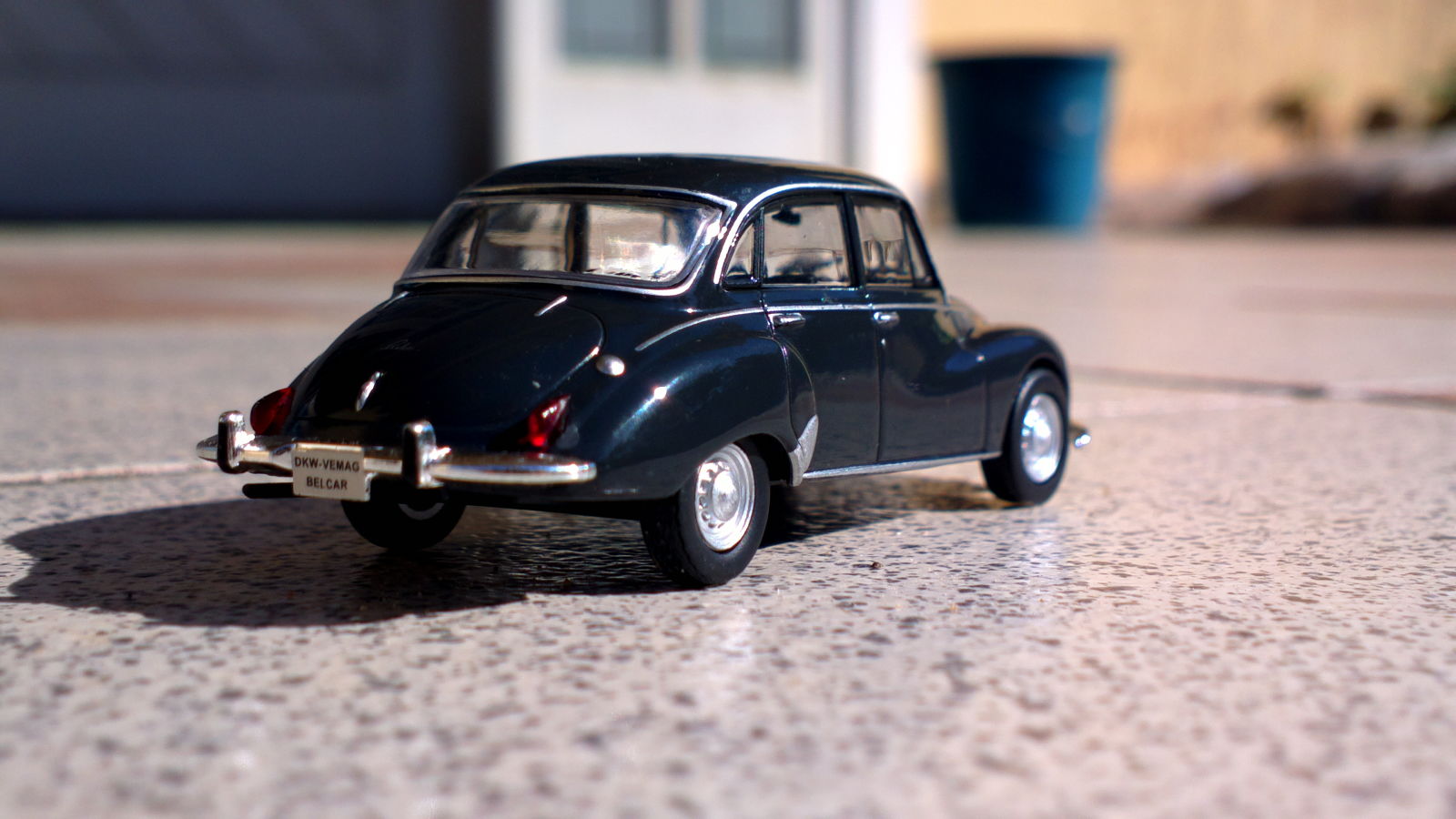
The DKW-Vemag Belcar had a great track history here. In 1958 there were absolutely no rules for Brazilian motorsports, so everyone raced pretty much together. You could go to Interlagos race track and see DKWs against Beetles, Borgward Isabellas, Volvo PV444s, Citroën Traction Avants... The DKWs, however, were light and incredibly easy to wrench on, so lots of race drivers bought and prepared DKWs, and they won lots of races.
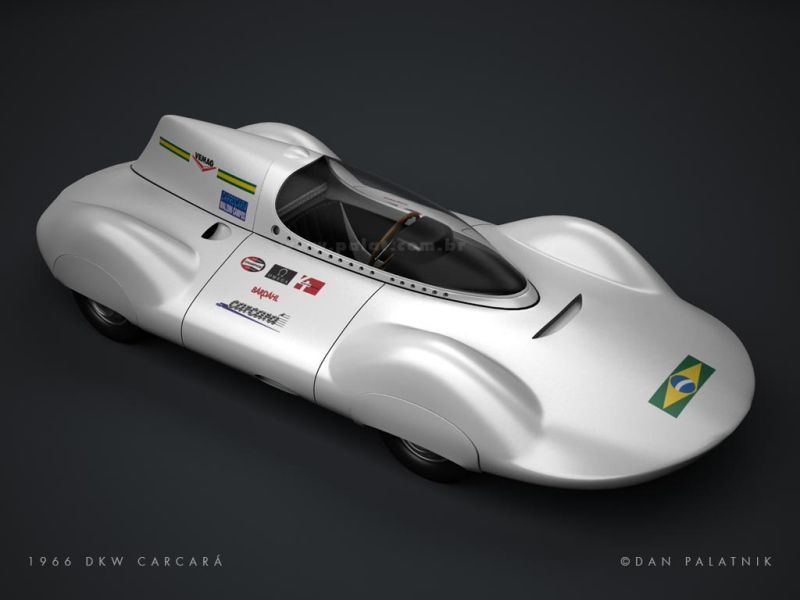
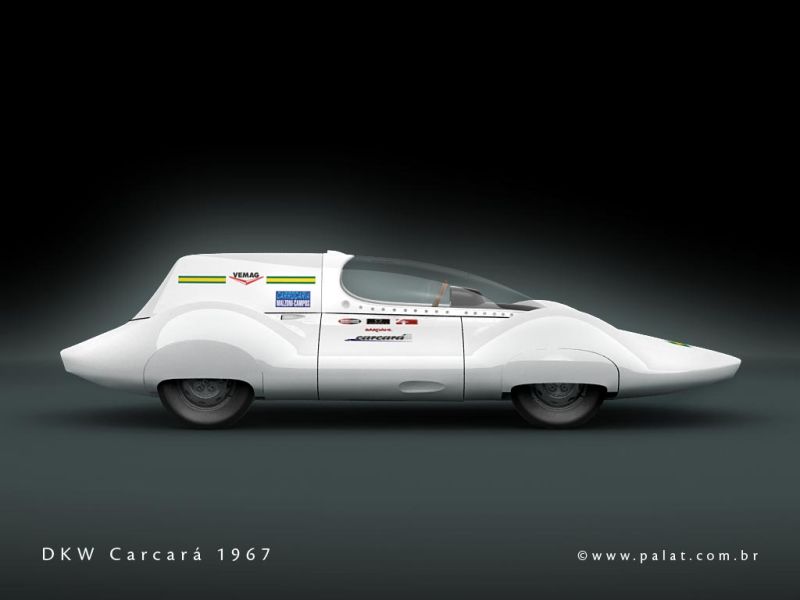

This is the DKW Carcará, made by the factory to break the Brazilian landspeed record. The Carcará is a species of Brazilian falcon, very fast to catch their prey, so this was a good name. You wouldn’t believe, but they managed to squeeze 103 cv out of the 999 cm³ (61 cu. in) engine, pushing the car to 213 km/h!!!

In the following years the DKWs were modernized with stronger chassis, better gearboxes and a new car, the Fissore, was introduced in 1964. But it was their swansong. In 1964 there was a coup-d’état and the military took the command. In 1965, VW bought the DKW, and in 1966 the last cars were produced. The factory was having some problems with flooding, quality and bad administration in the later years.
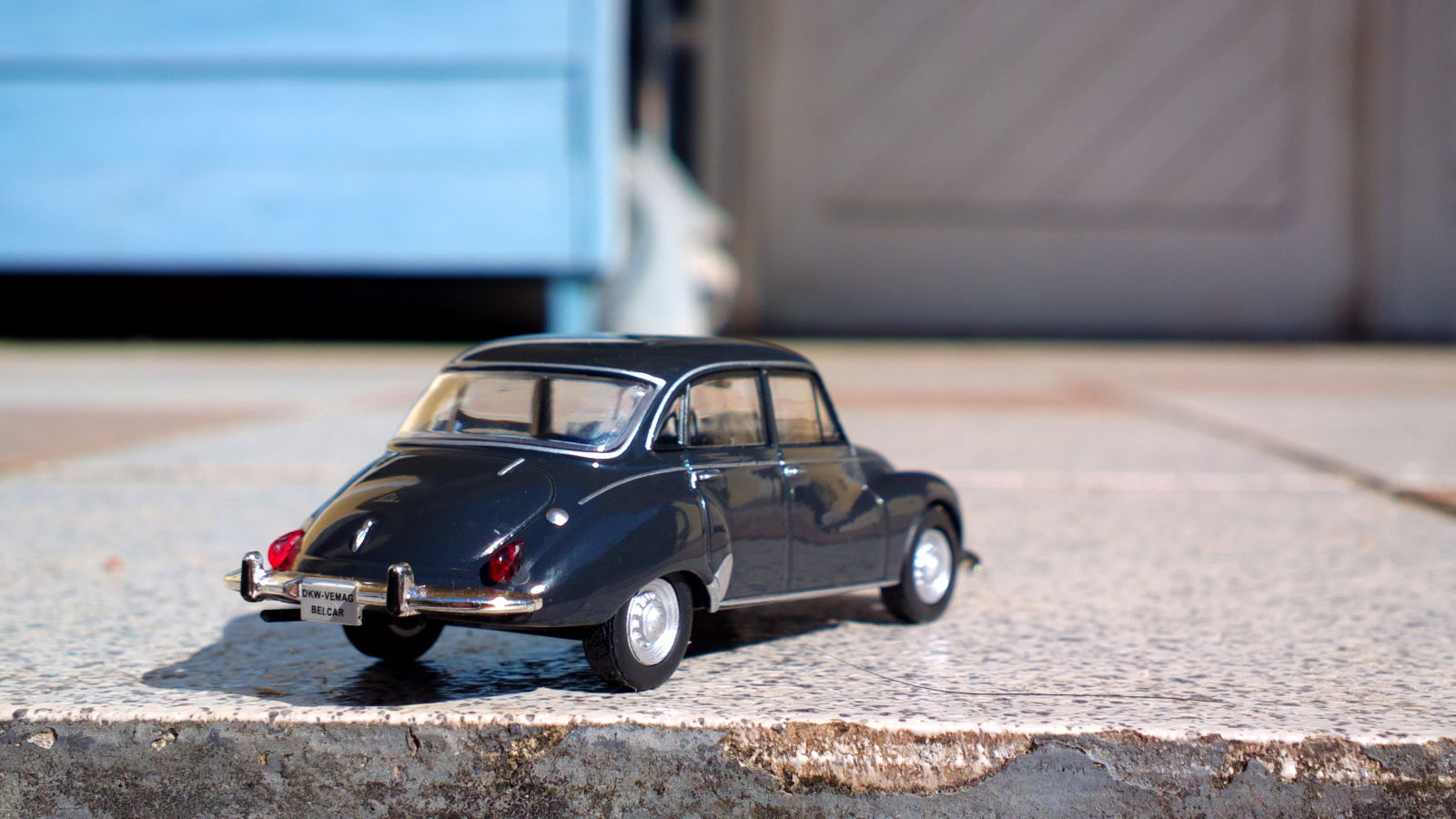
DKW had such a short, but fundamentally important, trajectory in Brazil. In a bit more than a decade it produced very advanced cars, different from anything we ever had, rocket started our auto industry and cemented itself on our car culture. There are still some Belcars, Vemaguetes, Fissores and Candangos being driven around here. They are a rare sight, but Brazilian gearheads always open a big smile when they see one.
Bonus ads:
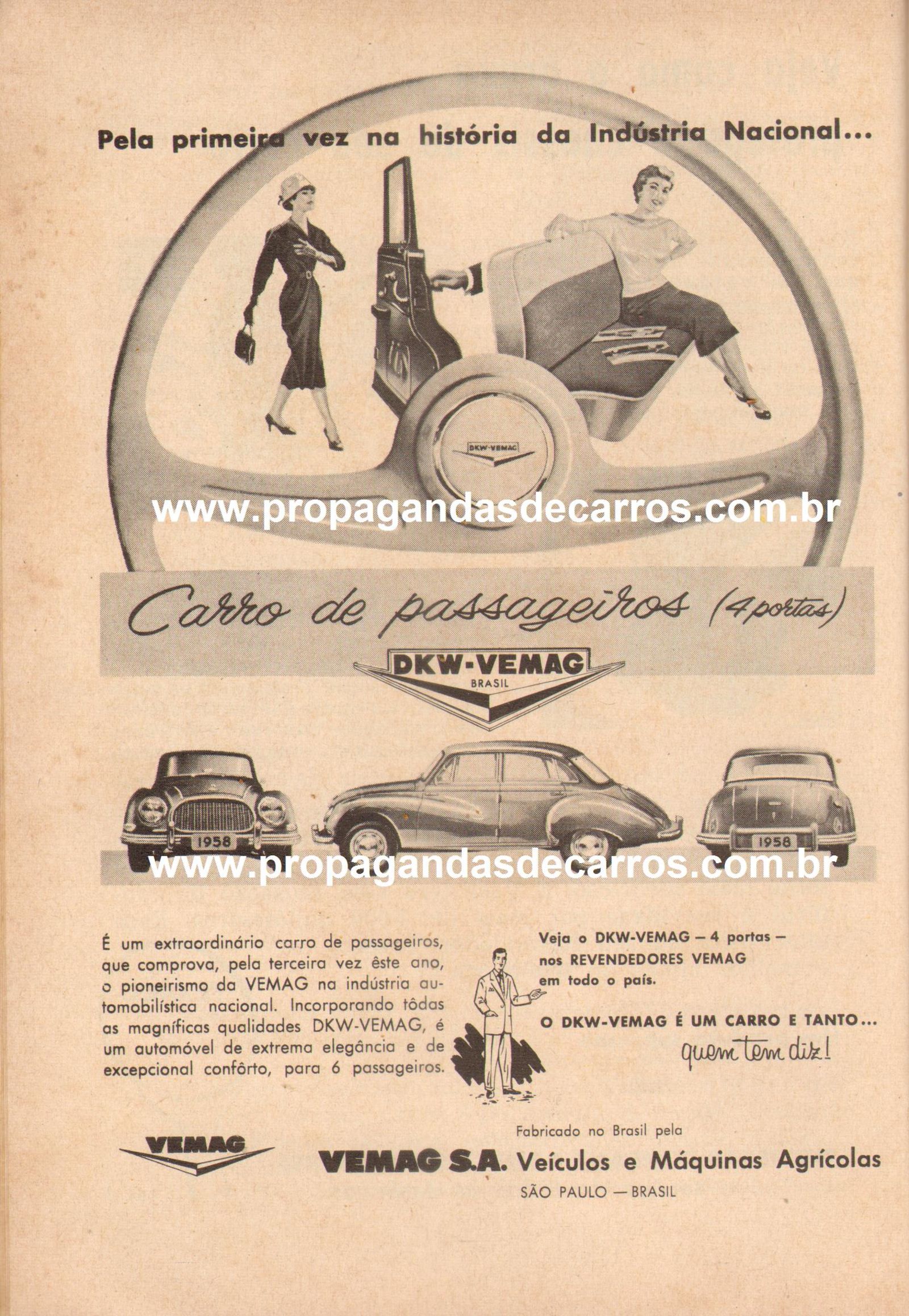
By the first time in the history of the national industry... Passenger car (4 doors). It’s an extraordinary passenger car that proves, for the third time this year, the pioneering of VEMAG in the national automotive industry. Incorporating all the magnificent DKW-VEMAG qualities, it is an automobile of extreme elegance and exceptional comfort, for 6 passengers.
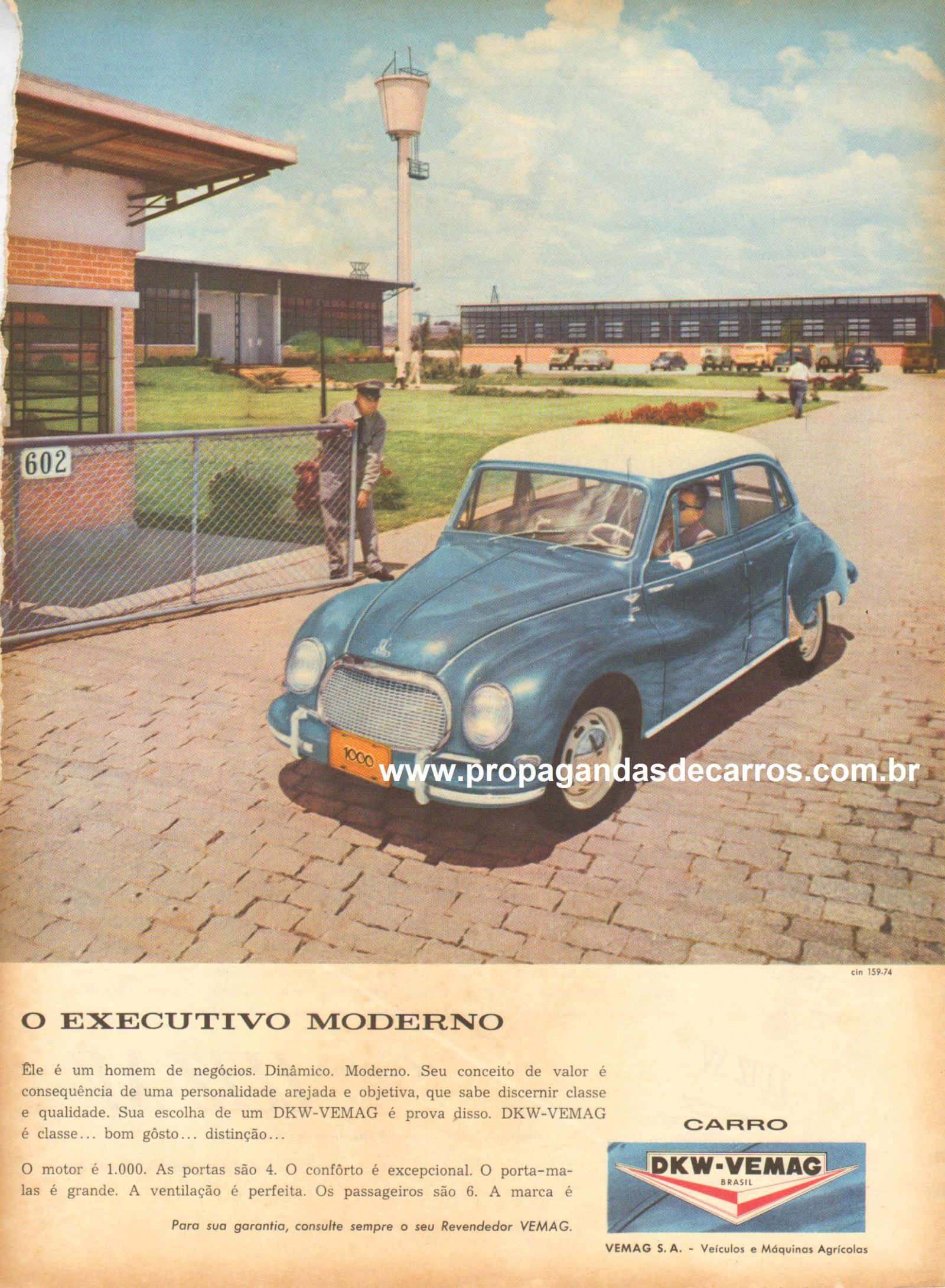
The modern executive.
He is a businessman. Dynamic. Modern. His concept of value is consequence of an objective and free personality, that knows how to discern class and quality. His choice of a DKW-VEMAG is a proof of that. DKW-VEMAG is class... Good taste... Distinction...
The engine is 1000. The doors are 4. The comfort is exceptional. The trunk is big. The ventilation is perfect. The passengers are 6. The brand is DKW-VEMAG.
And just to make you curious, this is the Candango

The most powerful at any terrain!
Not only the hill, mud! But the new and modern CANDANGO DKW-VEMAG wins the game, taking its passengers with every comfort (edu-petrolhead note: comfort, hahahahahahaha!) and safety to their destination. The CANDANGO DKW-VEMAG has a powerfull 1000cc engine! Now you can choose between 2 types of Candango. CANDANGO 4 with four wheel drive and the front wheel drive CANDANGO 2, cheaper and with an even more economical maintenance.
Sources (in portuguese)
Images of the Carcará with a brazilian television program about it